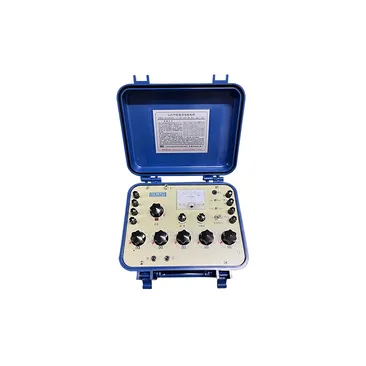Advancements in Automatic Imaging Technology for Enhanced Measurement Accuracy and Efficiency in Various Applications
The Future of Precision Automatic Measuring Imagers in Modern Applications
In recent years, the field of measurement technology has experienced substantial advancements, paving the way for new tools that enhance accuracy and efficiency in various applications. One such innovation is the automatic measuring imager (AMI), a device that has revolutionized the way we think about measurements in multiple sectors, including manufacturing, healthcare, and research.
Automatic measuring imagers employ sophisticated imaging technologies, usually based on high-resolution cameras combined with advanced processing algorithms. These systems can capture detailed images and extract precise measurements from them with minimal human intervention. This automation not only speeds up the measurement process but also significantly reduces human error, making the data collected more reliable.
In the manufacturing sector, automatic measuring imagers are used extensively for quality control. As products are manufactured, it is crucial to ensure that they meet specific tolerances and standards. Traditional measuring methods can be time-consuming and potentially less accurate due to factors like human error. With AMIs, manufacturers can achieve high-speed inspections where millions of components can be measured with utmost precision. For instance, in the automotive industry, dimensions of parts must align perfectly, and the slightest deviation can lead to performance issues or safety hazards. The integration of AMIs into the production line streamlines this process, allowing for real-time feedback and adjustments.
automatic measuring imager

In addition to manufacturing, automatic measuring imagers are becoming increasingly vital in healthcare. Non-invasive imaging techniques, such as those that utilize AMIs, are crucial in diagnostics. For example, in radiology, measuring the dimensions of tumors can help assess the effectiveness of treatment plans. With the capability of capturing images in various spectra—from visible light to infrared—automatic measuring imagers offer insights that were previously challenging to obtain. Their ability to provide accurate, quantitative data on complex biological structures turns them into indispensable tools for medical practitioners and researchers alike.
Moreover, the research community is leveraging AMIs for a variety of scientific inquiries. In materials science, researchers utilize these imaging systems to analyze microstructures and properties of materials at the nanoscale, enabling innovations in fields such as nanotechnology and pharmaceuticals. The automatic capturing and processing functions of imager systems allow for extensive datasets to be generated, enabling more comprehensive analyses and leading to faster breakthroughs.
Despite the promising capabilities of automatic measuring imagers, challenges remain. The initial setup costs can be high, and there is a learning curve associated with integrating these systems into existing workflows. Additionally, issues related to data privacy and security arise when these devices are employed in sensitive environments, such as healthcare. It is essential for organizations to navigate these concerns carefully to maximize the benefits that AMIs provide.
In conclusion, automatic measuring imagers represent a significant leap forward in measurement technology, offering enhanced accuracy and efficiency across various industries. As the technology continues to evolve, we can expect even more innovative applications to emerge, pushing the boundaries of what is possible in measurement and analysis. The future promises a world where automatic measuring imagers could potentially transform how we gather and interpret data, leading to smarter processes, improved quality, and groundbreaking discoveries. As we embrace these advancements, the implications for industry, health, and research could be profound, marking a new era of precision and accuracy.
-
The Role of Tensile Force Testers in Quality Control and Material Science
NewsAug.01,2025
-
Maintenance and Safety Tips for Aging Ovens
NewsAug.01,2025
-
Density Balance in Forensic Science
NewsAug.01,2025
-
Advanced Optical Measurement Technologies
NewsAug.01,2025
-
A Buyer’s Guide to Tensile Test Machines
NewsAug.01,2025
-
Why the Conductor Resistance Constant Temperature Measurement Machine Redefines Precision
NewsJun.20,2025
 Copyright © 2025 Hebei Fangyuan Instrument & Equipment Co.,Ltd. All Rights Reserved. Sitemap | Privacy Policy
Copyright © 2025 Hebei Fangyuan Instrument & Equipment Co.,Ltd. All Rights Reserved. Sitemap | Privacy Policy
